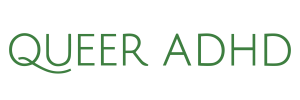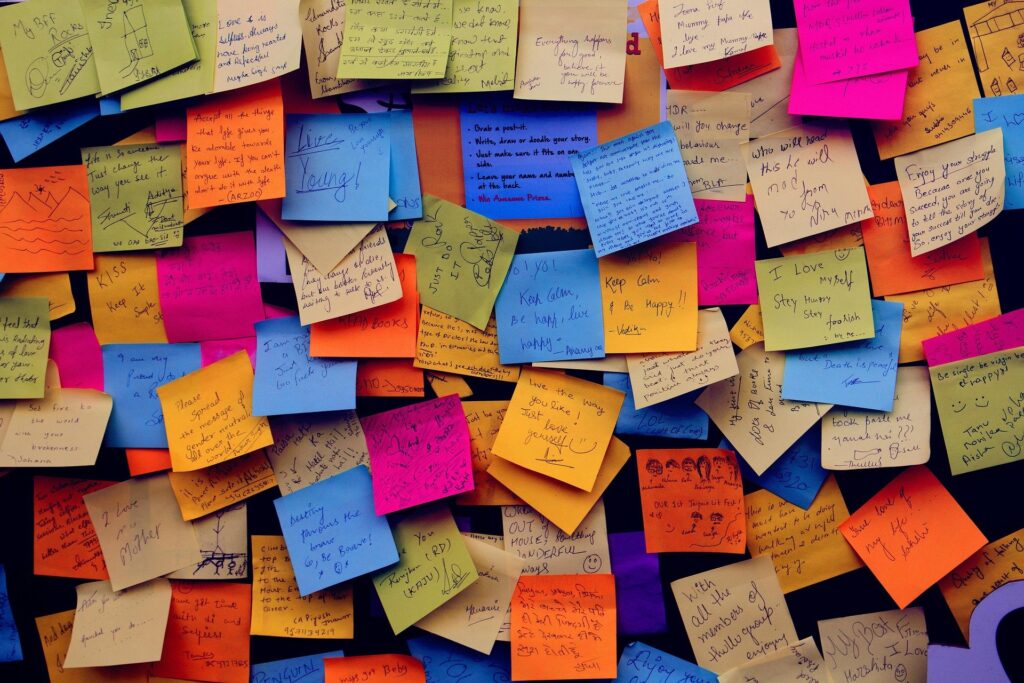This post was originally published at SarahDopp.com in the months leading up to the launch of Queer ADHD. We’ve migrated these posts to the Queer ADHD blog for continuity.
For the last few months, I’ve been using an iPhone app called Owaves to plan my day. I first heard about it through an episode of How to ADHD, and while that video was sponsored by the Owaves team, this article is not. I just like it. It’s become very useful to me, and I’m a strong believer that we need to tell each other about the tools that work for us—especially in the ADHD community.
Here’s the combination of factors that it’s helping me address:
- One of my ADHD symptoms is difficulty keeping the full picture of my day in my mind. Instead, I just have a sense of what’s “now” and what’s “not now.” This makes it hard to trust that I will get to other tasks, which brings anxiety and distraction.
- Another ADHD issue I struggle with is losing track of time when I’m engrossed in a task, which can mean ignoring or skipping whatever I had planned next, and then feeling guilty about that because I really meant to do it.
- My days are largely self-directed. I have a few meetings that involve other people, and the rest of my time is up to me.
- I’m working from home. When I worked in an office, I used my commute to firmly designate the start and end of my work hours, but I don’t have that option now.
- I work on multiple projects a day. This usually includes research projects, creative projects, and collaborative projects. I want to divide my time between them while still feeling accomplished on each project at the end of the day.
- I need to prioritize my health. This is crucial. I need walks, exercise, meals, and social connection time. Left to its own devices, my brain would prefer to skip these tasks, and sometimes it takes a crowbar to get them into my schedule.
Prior to using Owaves, I mostly switched around between these strategies:
- Overload my calendar with artificially scheduled tasks and work sessions. This feels overwhelming and gives me anxiety (hello wall of overcommitment!). As soon as something more urgent demands my attention, I start ignoring my calendar and the whole system breaks down. The worst part is that this means missing scheduled meetings with other people, so I’ve learned the hard lesson: I can’t afford to track scheduled commitments and personal priorities in the same way.
- Rely on To Do lists, and “wing it” on schedule. I define my priorities, try to do things in order, work when I can work, and try to be sane about taking breaks. This is pretty functional for work tasks, but taking care of my body goes out the window pretty much immediately. I don’t even notice that I’ve stopped exercising. When I stop eating lunch, things get pretty hairy.
Fortunately, I’m weirdly in love with finding, refining, and updating my systems. When I experience breakdowns like the ones above, I’m perfectly happy abandoning that system to try something new. I’ll switch to a digital task list. Then to a Kanban board. Then categorized columns on paper. Then I’ll add alarm clocks. And then the post-it notes start appearing on my monitor…
I’m taking the time to tell you about Owaves now because it has lasted for several months in my system. For me, that’s big. I might eventually move onto something else, but this has felt just right for long enough that it deserves an accolade. So let’s get into the details.
The app has a very simple premise: it visualizes my 24-hour day in the form of a wheel, which is divided into themed segments like Sleep, Eat, Work, Exercise, and Play. I customize the segments on my wheel by setting their themes, order, labels, icons, and start and end times. Once I have my day looking about right, I can save that as a template (called a Day Plan) to use on future days.
Full Day View:

Edit View:

What I love most about this is that it doesn’t look like a calendar. Since I now reserve my calendar for scheduled meetings, a day that looks like a wall-to-wall events calendar is a day that feels way overscheduled. Instead, this is a circle—something friendly and new. I’ve started to experience it as a series of flexible suggestions that represent balance. As a result, I feel differently about the day being full; in fact, it feels wrong if it’s not full.
Here’s what I’ve found works best for me as I use the app:
1) Planning my day
I spend about 10 minutes setting up my day in Owaves. I start by loading my standard Day Plan, then I look at my calendar and rearrange whatever’s needed so that my day makes sense for my commitments. My goal is to handle planning at the end of each work day, so that the following morning is planned before I begin, but sometimes my day gets away from me and I forget. When that happens, I do this first thing in the morning before anything else.
2) Zoning
I don’t over-specify the segments of my day in Owaves. Most of it is just labeled “Work,” and I use different tools to organize my work tasks. The value for me is just in knowing what zone of my day I’m in right now, and making sure I’ve left enough zones for what matters to me.
3) Pairing with other tools
Here’s how I fit the app into the rest of my system:
A) Google Calendar – I use this for scheduled meetings only. No artificial scheduling of tasks or work sessions allowed!
B) Alarms on my phone – Since I’m prone to hyperfocus, I use iPhone alarms (scheduled to repeat every day) to alert me when it’s time to stop working. One is for exercise, one is for lunch, and one is to wind down and start planning my next day. When I set up my day, I also add one-off alarms to grab my attention 10 minutes before a meeting. Owaves includes alerts, but they’re not strong enough for me—I need something loud and persistent, and the ability to snooze that alarm if I need “just five more minutes!”
C) A whiteboard – I keep a small (10″ x 12″) whiteboard on my desk, and I use it as my To Do list for the day. I also keep a backlog of tasks in a bullet-journal-esque paper notebook, so that the whiteboard is for Today Only.
4) Customizing the app content:
When I first loaded the app, I saw a sample day plan that offered suggestions for a balanced day. I reviewed that for inspiration, then deleted it and made my own from scratch. I found that I connected more with each segment if I chose icons (they have a default set, but can also take any emoji) that feel personal. For example, I use a salsa dancer for exercise because it reminds me to enjoy my movement practice. And I’ve mixed in an owl, a genie, a surfer, and a microphone for my various work blocks because they remind me to be smart, to make magic, to go with the flow, and to put myself out there—much more interesting to me than a briefcase or a line chart!
5) At-a-glance reminders
Owaves has done a nice job of making use of iOS widgets for quick glance visualizations. I’m using them in two places:
A) Apple Watch – Much like the host of How to ADHD, I bought an Apple Watch shortly after I started using Owaves. While it’s not necessary to use the app, I do find it really nice to look down at my wrist and see what’s happening now and what’s happening next. They’ve created a variety of complications (which are mini widgets on the face of the watch) to work with the different designs available.
B) iPhone Home Screen – Three months ago—finally!— Apple started supporting widgets on iPhone home screens. So now when I open my phone, there is a large Owaves widget reminding me what I’m supposed to be doing now, how much time is left on it, and what I’m planning to do next. Since I open my phone unconsciously looking for the next dopamine hit, this is a fantastic advancement. I can open TikTok, sure, but I now have to get past the bright orange salsa dancer reminding me I meant to start moving.
6) Permission to keep refining
Whenever I realize something in my day plan can be improved, I improve it and save a new template. This is crucial for me; I can’t stick with a system unless it evolves easily with how I’m learning and growing. To keep this manageable, I now label my day plans with the date that I created them, and I delete the old ones.
Sometimes my day goes off the rails and I lose track of everything. My biggest risk in that situation isn’t losing a day of organization—it’s going on to lose a week or more because I’ve given up on my tools. With Owaves, I’ve been able to come back to it without too much resistance because it’s lightweight and adjustable. It also helps that it isn’t holding the emotional weight of full tasks. It’s just zones. Just intentions. Just a vision for balance that is constantly evolving.
Image by Pexels

